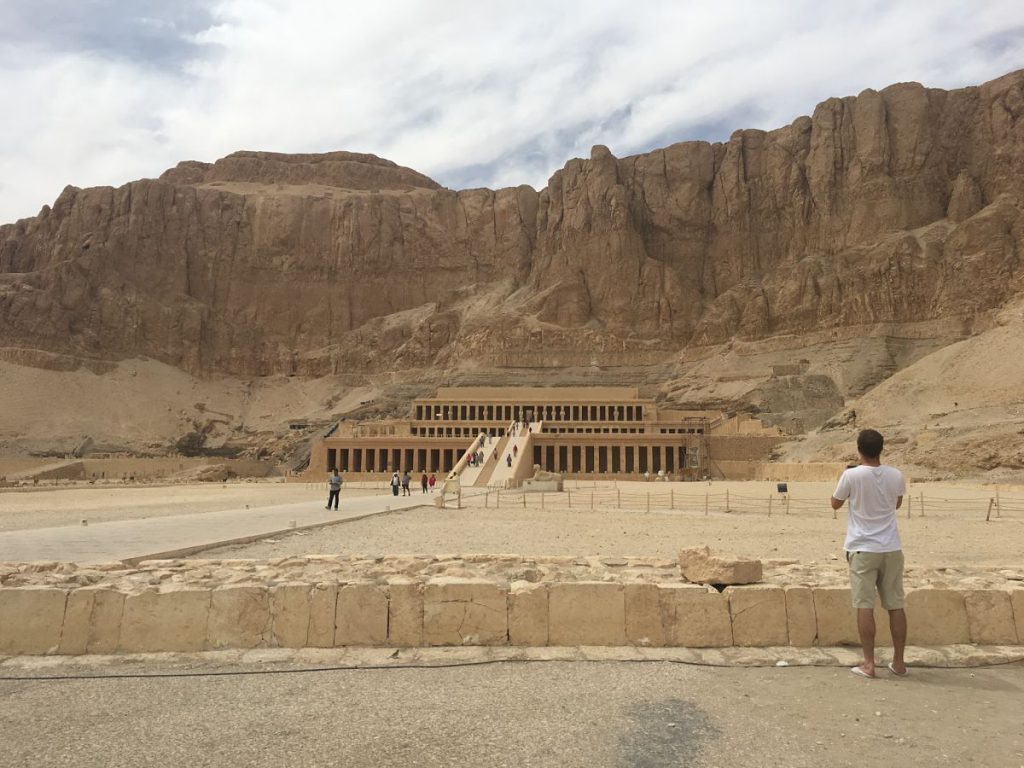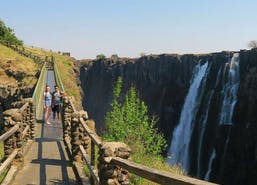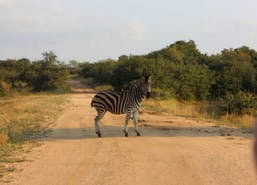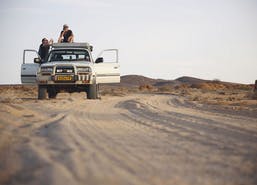Our Self-Driving Adventure in Namibia
For our third African adventure, we chose Namibia as destination. Namibia is a country we put on our bucket-list because of the big geographic diversity we expected to see there, as well as the wildlife in the National Parks.
From Amsterdam, we had a direct flight to Windhoek, where we got our rental car, a brand new Ford Ranger, and we could start our self-drive tour. The first region we visited was the southern part of the Namib desert in the Namib-Naukluft Park; a magnificent desert area with some of the highest dunes in the world. A drive early in the morning through the Sossusvlei is the best way to enjoy the colors of the red to brown, and orange to pink dunes in the light of the rising sun and experience the effects of the shadows on it. The older the dunes, the more intense the reddish colors. A real mesmerizing and breathtaking view!

Another breathtaking experience we had was at Dune 45, named because it is situated 45 km from Sesriem, where we climbed to the top. If you plan to do this, you have to start very early because of the heat. We started to climb the 170m up to the summit at 7.50AM and reached the top around 8.30 AM. Because of the sand, it is a challenge and a tough hike. With each step you make, your feet slide down so there is not much progress in your climb. But after reaching the top, we were surprised by so much beauty of the surrounded 360° landscapes and desert views. And also very impressive is the silence that surrounded us, nothing else than the wind whispering in our ears. Magical moments!

From Dune 45, we continued the drive to another iconic place in that area named Dead Vlei, a clay pan about 2km from Sossusvlei. Impressive as well are these landscapes with the orange and rusty brown dunes contrasting the almost white salty floor of the Vlei (African for valley or pan) full of blackened death acacia trees. Surrealistic is the only word I can use to describe my views there. These landscapes are so photogenic!

From the Sossusvlei area, we continued our tour to the region of Swakopmund. During all our drives through the country, we crossed a range of landscapes. Sand desert, stone desert, canyons, grasslands, the Atlantic Ocean, table mountains, pointed mountains…we saw it all! Namibia is really a dream for any landscape photographer!
In the Swakopmund-region, we stayed at the Private Nature Reserve Wüstenquell that covers 7000ha. It is situated in a kind of moon landscape, totally different from all others we had seen until then. We rented a mountain chalet for two nights. It was basic (no electricity, no hot water) but oh, what an experience! We felt like it was just the two of us on top of the world. Don’t expect many wildlife here, but the landscapes are so fascinating! I can highly recommend a stay in this area.


The next stop on our program was the area of Brandberg in Damaraland, situated in the north-western part of the Namib desert. The Brandberg Massif’s highest point is the Königstein – 2573m (8442ft) above sea-level. Lit by the setting sun, it looks like the mountain is burning. The ‘Brandberg’ was a spiritual place to the San tribe (Bushmen) in earlier times. With a little luck, sometimes one can encounter the desert elephants that live in this area. Two times a small herd crossed the road in front of our car.

From the Brandberg area, we moved on to the Palmwag-concession, another protected Private Nature Reserve covering 400000ha. In this reserve, we made a rhino-tracking and a game-drive. The rhino-tracking was a very exciting experience. It was planned that from the moment the trackers had a location, we would start to walk. But as we were walking through a dry riverbed, the rhino became upset about our presence and started an attack. For both rangers and trackers, this causes a panic reaction because they have to take care of us, clients. Everyone tried to climb the steep and rocky shore as quick as he/she could, some of us encouraged by the rangers, and it was really scary!!! But, these are the impressive stories to tell when we arrived back home.
Besides the rhino’s, other wildlife as well can be seen in this reserve. On the game drive, we saw lots of giraffes, zebra’s, oryx, springbok and steenbok.

Still cruising Damaraland, we continued to Kamanjab, where we had such a marvelous visit at an Himba Village. The Himba are an indigenous, semi-nomadic tribe. The women are accustomed to wear traditional clothes and a traditional hair-style. In fact, they only wear a skirt-like clothing made from calfskin and further top-less. Occasionally, they wear sandals for footwear. They cover their body with ‘otjize’, a mixture of ochre pigment and goat fat butter to protect the skin to the hot and dry climate. Jewelry as well as hairstyles, play a significant role to indicate age and social status. Adult women use hair-extensions that are treated with ashes and otjize and worn in a kind of dreadlocks. Married women finish the haircut with an ornament of sheepskin and it looks like a little crown. They are so fascinating and photogenic; I really loved capturing their portraits. I felt very privileged they gave me the opportunity to come into their daily life and capture their daily activities. One moment is memorable; two women on the ground, one was making the traditional hairstyle to another while the first one’s baby came to crawl in between, grabbed his mother’s breast and start drinking while she was continuing with the hair of the other woman. So intimate, so precious!

It was time for Etosha National Park. We stayed several days in it at three different locations. We entered the park through the Andersson Gate. To discover that part of the park, we stayed at Okaukuejo. There are many kinds of accommodation in that area, all situated outside the park. But the attraction of Okaukuejo, situated inside the park, is a ( lit ) waterhole. It is really marvelous what a diversity of animals you can encounter coming to drink. It was a coming and going of all species; zebra, kudu, rhino, elephant, giraffe, jackal, warthog, springbok, oryx. You name it and you will probably see it!
In the park, the best opportunities to spot animals is at the waterholes. There are a lot of waterholes; some natural, some man-made. For the natural ones, it depends on the season, but during our visit, most were dry.


The Etosha Pan is a large salt pan that covers some 4731 square km and is mostly dry except after heavy rains. The colors of the landscapes inside are fabulous; from shiny white to water green, depending on the light and it was a dream to capture this all with my camera. Etosha is really Noah’s Ark. The diversity of animals is impressive and the landscapes as well.
Except the big animals, lots of beautiful birds can be seen in the park; the smaller species like the Lilac-breasted roller and many species of weavers but the bigger ones like species of hornbills, bustards and ostriches as well. Some vultures, secretary birds, eagles and many others can be seen too. Although this was not our first safari-experience, we were very impressed by the diversity and the range of animals we encountered in this park.

We also stayed at the Halali Resort to discover the central part of the park. After a few days of discovering the whole park, we left through the Von Lindquist Gate. In that neighborhood, there is also a waterhole named Klein Namutoni. There we had an awesome encounter with a few elephant families taking a bath. This was a magnificent moment and for a whole while, we stayed there and enjoyed our views.
To end our stay in Etosha in style and luxury, we stayed at the Tented Camp Onguma just near Vond Lindquist Gate. What a marvelous paradise and guests are treated so personal! It was hard to leave after two nights.


On our way back to Windhoek, by chance, we discovered the Okonjima Africat Foundation and we decided to take a look. The foundation is a Namibian organization to promote the conservation of big carnivores such as the leopard and the cheetah. We took part in a game-drive and could see 5 cheetah orphans who’s mothers had been killed by poachers and which are now learning the skills to hunt and to survive in the wild. After their learning process, it is the intention to release them in the 22000ha Private Nature Reserve. With lots of nice pictures, we said goodbye to the cheetah’s.

Our self-drive was quiet a challenge. Namibian roads are mostly gravel roads; very bumpy, sometimes very sandy and lot of driving skills are needed. The roads can be very monotonous, especially driving through the desert. Namibia is one of the least densely populated countries in the world. It was not rare to drive hundreds of kilometers without seeing a house, a human being or another car …
About renting a car: Make sure you are well equipped with all kinds of materials for checking and handling the tire pressure. On the bumpy and sandy roads, this is very important! We were lucky, no flat tires at all. We recommend to rent from a reliable company.
Namibia was just as we had expected. The landscapes are so diverse and behind each curve, over each mountain, it surprises with a totally different view. It is gifted with a rich wildlife so it looks a paradise for wildlife spotters. If you like adventure, if you like new challenges, Namibia is for you!




